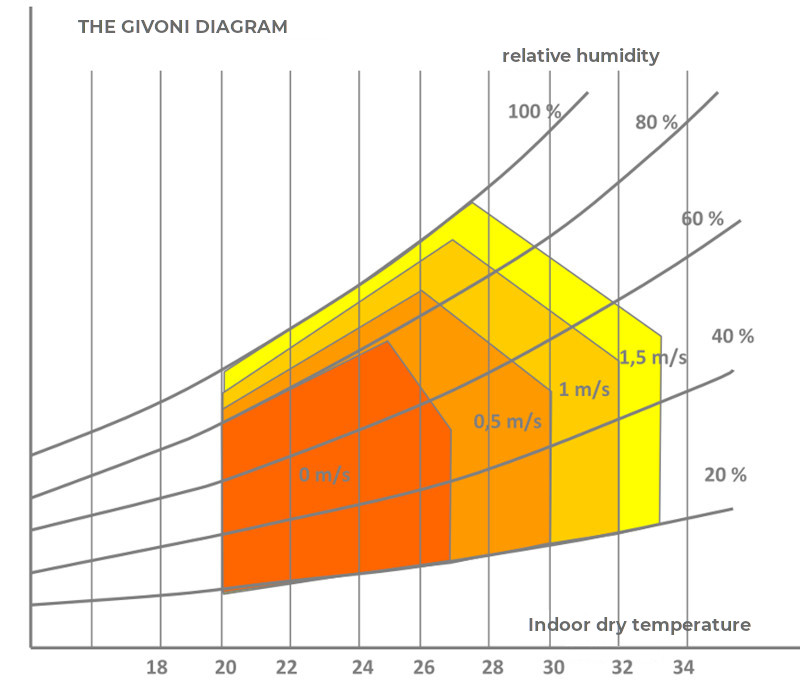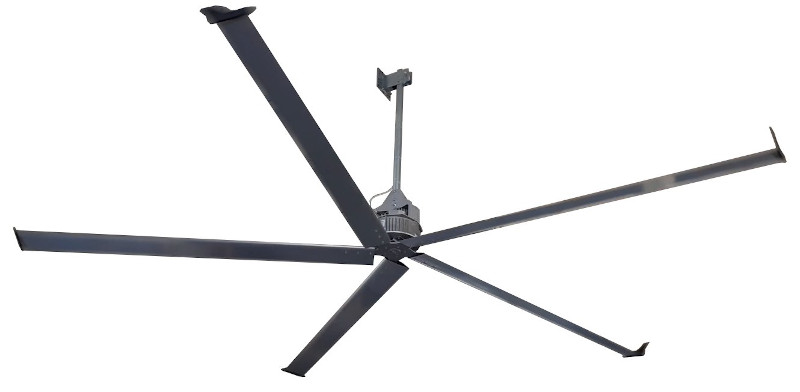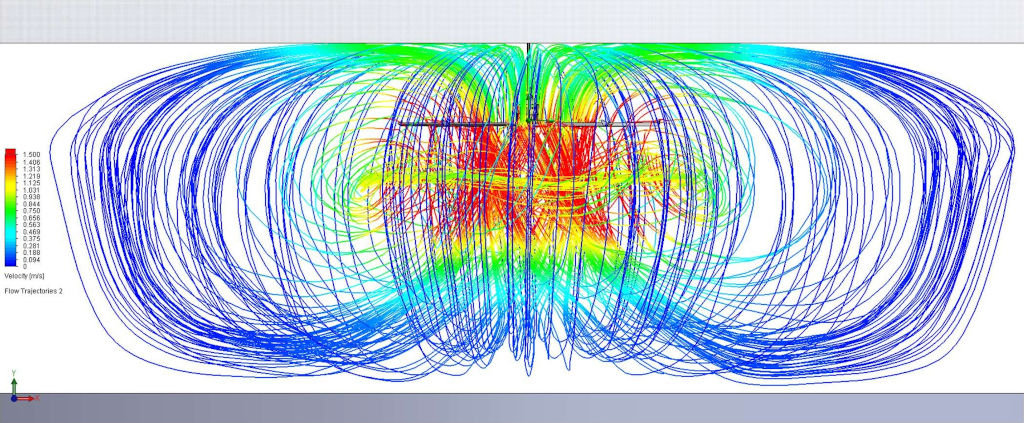Palehe
The HVLS fan for very large volumes
Very large blade fans, otherwise known as HVLS (HIGH VOLUME LOW SPEED), are ceiling fans with diameters ranging from 2.5 to 4 metres. The purpose of these giant HVLS fans is to cover a very large surface area or a very high height, as found in hangars, warehouses, sports halls, etc.
HVLS fans use their large size to move large masses of air. They deliver high performance in terms of airflow and energy efficiency.
HVLS ceiling fans are used both for winter comfort (to bring down the warm air accumulated on the ceiling) and to improve the performance of de-stratification heating systems
HVLS fans are also used for summer comfort by generating air velocity to improve user comfort through evapo-transpiration (see Givoni diagram).

HVLS fans are the solution for very large spaces or high volumes where traditional fans are limited by their flow rate and size.
The slow rotation of the blades is not a nuisance in terms of noise (which remains contained below 60 DB).
It should be noted that very large spaces are generally places that pose insoluble problems, with astronomical costs in terms of heating (which stagnates at the ceiling) or inefficient air conditioning.
The temperature difference between floor and ceiling can quickly exceed several degrees.
The result is a great sense of discomfort for users.
PALEHE HLVS fans are ideal for use in warehouses, hangars or sports halls.
They offer significant energy savings (through destratification) and a very appreciable gain in comfort.
It is available in 3 models of 3m, 3.6m or 4.2 metres, the characteristics of which you will find below:
Don’t hesitate to contact us for more information, help in drafting a standard SCC clause or choosing the most suitable model.

An airflow up to 4 times the diameter of the Palehe

This ventilation system is used in large spaces such as production plants, logistics centres, sports halls and department stores, where air conditioning systems are very expensive both in terms of initial investment and subsequent running costs.
Our Palehe HVLS ceiling fan lowers the temperature by 2° to 6° C in summer comfort, while in winter comfort the destratification mode evens out the temperature in the room, saving around 30% in energy costs.
This improvement can be seen in the “Thermal Comfort Chart” created by the Health and Safety Executive at UC Berkeley.
HVLS fans also offer other advantages:
- They reduce the proliferation of viruses, bacteria and mould.
- They prevent the formation of condensation on the floor, thus avoiding damage to materials and/or machinery.
- They increase operator productivity through greater comfort in the workplace.
- They have extremely low power consumption (on-board motor-inverter).
- They can also be installed on existing heating/cooling systems.
- They can be installed gradually, avoiding the need for major investment.
